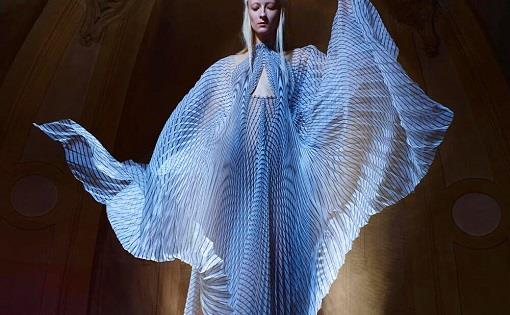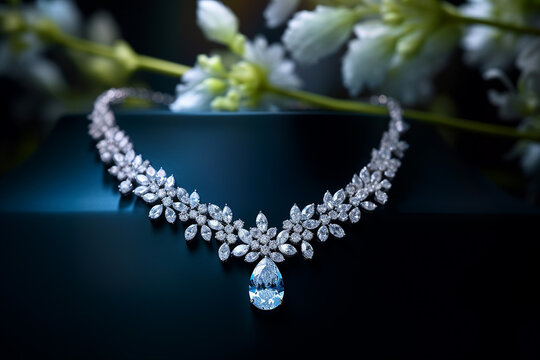
Bridging Innovation and Style
Fashion technology, once a niche sector, has now become a driving force behind the evolution of the fashion industry. With advancements in various fields like virtual reality, wearable tech, and artificial intelligence, the intersection of fashion https://www.memorialdafama.com/ and technology is giving rise to exciting new possibilities and experiences.
Table of Contents
ToggleIntroduction to New Fashion Technology
In essence, fashion technology encompasses the use of technological innovations to enhance various aspects of the fashion industry, from design and manufacturing to retail experiences and beyond. It’s not just about creating aesthetically pleasing garments but also about leveraging technology to redefine how we interact with fashion.
Emerging Trends in Fashion Technology
Virtual and Augmented Reality in Fashion
Virtual and augmented reality are transforming the way we shop for clothes offering immersive experiences that bridge the gap between the physical and digital worlds. Virtual fitting rooms allow customers to try on clothes virtually, while augmented reality apps enable them to see how a particular garment would look on them in real-time.
Wearable Technology: Smart Fabrics and Accessories
From smart fabrics that can regulate body temperature to wearable devices that track fitness metrics, the integration of technology into clothing and accessories is revolutionizing functionality and style. These innovations not only enhance the wearer’s experience but also open up new avenues for self-expression and personalization.
3D Printing Revolutionizing Fashion Design
3D printing technology has democratized fashion design allowing designers to create intricate and customizable pieces with ease. From avant-garde runway creations to bespoke jewelry, 3D printing offers endless possibilities for pushing the boundaries of traditional fashion design.
Artificial Intelligence in Trend Forecasting and Personalized Shopping Experiences
Artificial intelligence algorithms analyze vast amounts of data to predict trends and consumer preferences accurately. This enables fashion brands to tailor their offerings to individual customers, providing personalized recommendations and shopping experiences that cater to their unique tastes and preferences.
Impact of New Fashion Technology on Design and Manufacturing
The adoption of new fashion technology has streamlined the design and manufacturing process, leading to increased efficiency and innovation.
Speeding Up the Design Process
Digital design tools and software enable designers to iterate more quickly and experiment with different ideas without the need for physical prototypes. This accelerates the time-to-market for new collections and allows brands to stay ahead of rapidly changing trends.
Enhancing Creativity and Customization
Technology empowers designers to push the boundaries of creativity and create truly unique and innovative designs. Whether it’s experimenting with unconventional materials or leveraging digital tools for intricate pattern-making, technology offers endless possibilities for customization and personalization.
Sustainable Practices in Fashion Technology
Sustainability is a growing concern in the fashion industry, and technology plays a crucial role in driving positive change. From eco-friendly materials and manufacturing processes to innovative recycling and upcycling techniques, fashion technology is paving the way for a more sustainable and ethical future for fashion.
Revolutionizing the Retail Experience
In addition to transforming the design and manufacturing process, new fashion technology is revolutionizing the way we shop for clothes.
Virtual Try-On Experiences
Virtual try-on experiences allow customers to see how a garment looks on them without having to physically try it on. This not only enhances the convenience of online shopping but also reduces the need for returns, leading to a more seamless and satisfying shopping experience.
Smart Mirrors and Interactive Displays
Smart mirrors equipped with augmented reality technology enable customers to visualize different styling options and accessories in real-time. Interactive displays provide additional product information and styling tips, enhancing the overall shopping experience and driving engagement.
Personalized Recommendations and Virtual Stylists
Artificial intelligence-powered algorithms analyze customer data to provide personalized recommendations and styling advice. Virtual stylists offer personalized fashion advice based on individual preferences, helping customers discover new styles and trends that align with their unique tastes.
Challenges and Opportunities
While the integration of technology into fashion offers numerous benefits, it also presents challenges and opportunities for the industry.
Privacy and Data Security Concerns
The collection and analysis of customer data raise concerns about privacy and data security. Fashion brands must prioritize transparency and data protection to build trust with consumers and ensure the responsible use of technology.
Bridging the Digital Divide in Fashion
Access to technology and digital tools is not evenly distributed across the fashion industry, creating a digital divide between large brands with ample resources and smaller, independent designers. Bridging this gap requires investment in education and infrastructure to empower all stakeholders to harness the power of technology effectively.
Opportunities for Small Businesses and Independent Designers
Despite the challenges, new fashion technology presents exciting opportunities for small businesses and independent designers to innovate and differentiate themselves in a competitive market. By leveraging technology to streamline operations, reach new customers, and offer unique experiences, small brands can carve out their niche and thrive in the digital age.
Future Outlook
Looking ahead, the future of fashion technology promises even more exciting innovations and advancements.
Predictions for the Future of Fashion Technology
From advancements in wearable technology to the continued integration of artificial intelligence into every aspect of the fashion industry, the future holds endless possibilities for innovation and creativity. As technology continues to evolve, so too will the ways in which we interact with fashion, blurring the lines between the physical and digital worlds.
Integration of Fashion and Technology in Everyday Life
As fashion technology becomes more accessible and ubiquitous, we can expect to see its integration into our everyday lives in ways we may not even anticipate. From smart clothing that monitors our health to virtual reality-enhanced shopping experiences, technology will continue to shape the future of fashion in profound and unexpected ways.
Conclusion
In conclusion, new fashion technology is revolutionizing the fashion industry, from design and manufacturing to retail experiences and beyond. By leveraging advancements in virtual reality, wearable tech, 3D printing, and artificial intelligence, fashion brands can enhance creativity, streamline operations, and offer personalized experiences that cater to the unique tastes and preferences of consumers. As we look to the future, the possibilities for innovation are endless, promising an exciting journey at the intersection of fashion and technology.
Related Posts

GIA vs IGI: Understanding Lab-Created Diamonds

The Ultimate Guide to Barbershop Services in Coral Gables

